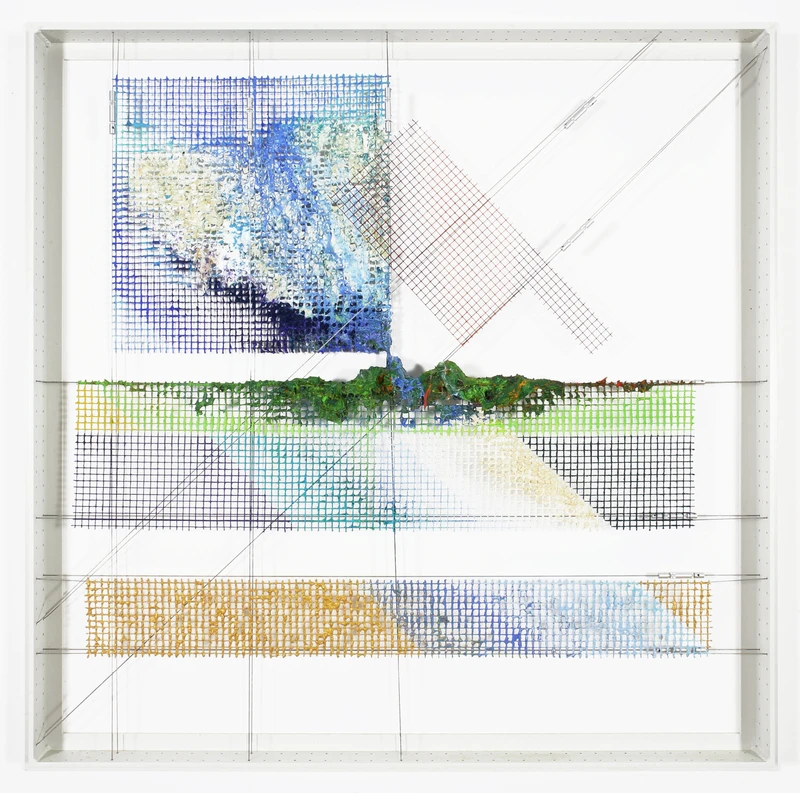William Tillyer: Mulgrave Tensile Wire Works and Mulgrave Wire Scrolls
16 Sep-31 Oct 2021


In the Mulgrave Tensile Wire Works, William Tillyer (b. Middlesbrough, 1938) has produced probably the most radical paintings of his career. Stainless steel wires strung across a metal frame and held in tension by turnbuckles support geometrically shaped areas of metal mesh, woven through with paint reflecting the colours of the North Yorkshire landscape, in which the artist has lived for most of his life. While evoking the landscape, the arrangements of the mesh shapes owe much to the Suprematists and Constructivists of the early 20th Century, El Lissitzky and Malevich, Rodchenko and Gabo and even to Kandinsky.
In the Mulgrave Wire Scrolls a single rectangle of mesh is mounted horizontally on a backboard painted in muted tones and in a ratio derived from that of Chinese scroll paintings. The mesh is again woven through with paint but in this series the panoramic, horizontal nature of the work make the reading of the landscape image more explicit. In some paintings clumps of trees, clouds and buildings appear.
For Tillyer each new group of paintings is an adventure into new ways of painting, all the while staying true to his foundation philosophic idea that everything is one thing, everything is connected. His use of the grid structure in all its many forms from the crosshatched etchings in the early ‘70s through to the recent works with metal mesh has stood for the idea of a network of interconnectivity. Tillyer has had a longtime belief in the Gaia hypothesis developed in the 1970s by James Lovelock, which views the planet as an interconnected, self-regulating system of forces.
“He has found remarkably inventive ways to address nature as a changing, turbulent force that exceeds humankind’s desire for control and domestication, even while forcefully acknowledging its presence. In this, he is the true heir to the English Romantic tradition and artists, such as J. M. W. Turner and William Blake.” John Yau
The exhibition marks the launch of William Tillyer - A Retrospective, a major new monograph on the artist written by the celebrated Chinese American poet and critic John Yau and published by Rizzoli.